Results
-
 £118.99
£118.99A Tribute to Michael Jackson - Rod Temperton
Over the years much has been written and broadcast about Michael Jackson. Naohiro Iwai has created a powerful medley by letting the music of the undisputed 'King of Pop' speak for itself. The medley contains the hits Thriller, I'll BeThere and I Want You Back. Don't stop 'til you get enough!
Estimated dispatch 7-14 working days
-
 £57.50
£57.50Dorchester ( Concert March ) - Eric Osterling
Veteran composer Eric Osterling has provided us with many great marches over the years and this energetic 2/4 march is one of his best. Solid ensemble writing, easy-to-teach stylistic features, and great audience appeal make this a wonderful addition for any band program. (2:00)
Estimated dispatch 7-14 working days
-
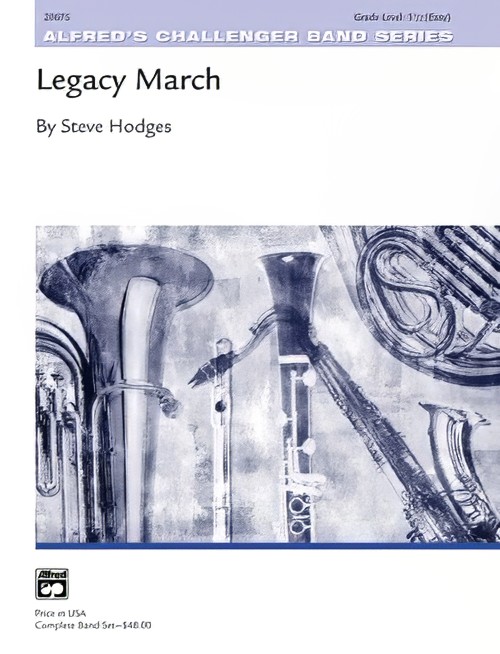 £48.95
£48.95Legacy March (Concert Band - Score and Parts) - Hodges, Steve
You'll find yourself humming this catchy march over and over! Beginning with a fanfare in the trumpets, horns, and saxophones, the low brass soon enters followed by the woodwinds playing a countermelody. The march tune is introduced by the trumpets and saxes, then turned over to the winds. The B section brings a quieter mood, followed by a return of the A theme with a brief coda that brings the piece to a grandiose conclusion. A fantastic addition to the march repertoire. Duration: 2.45
Estimated dispatch 7-14 working days
-
 £118.99
£118.99Cats - Andrew Lloyd Webber
The Musical CATS, with music by Andrew Lloyd Webber is based on the 1939 poetry collection Old Possum's Book of Practical Cats by T. S. Eliot. It became Lloyd Webber's third great success, after the musicals Jesus Christ Superstar and Evita. He began setting Eliot's poems to music in 1977, and the compositions were first presented as a song cycle in 1980. Producer Cameron Mackintosh then recruited director Trevor Nunn and choreographer Gillian Lynne to turn the songs into a complete musical. CATS became one of the longest-running shows in West End and Broadway history. It received its world premiere at the New London Theatre in 1981, where it played for 21 record-breaking years and almost 9,000 performances. The following year, CATS opened at New York's Winter Garden Theatre, its home for the next 18 years, garnering seven 1983 Tony Awards, including Best Musical. The show returned to Broadway in 2016, where it had a successful pre-tour run at the Neil Simon Theatre. CATS has been presented in over 30 countries, translated into 16 languages, and seen by more than 73 million people worldwide. Lloyd Webber's magnificent musical score includes the poignant hit song Memory, which has been recorded by over 150 artists, from Barbra Streisand to Liberace to Barry Manilow. It took 7,486 chandelier crashes for Lloyd Webber's The Phantom of the Opera to take over from CATS as the longest-running show in Broadway history in January 2006.
Estimated dispatch 7-14 working days
-
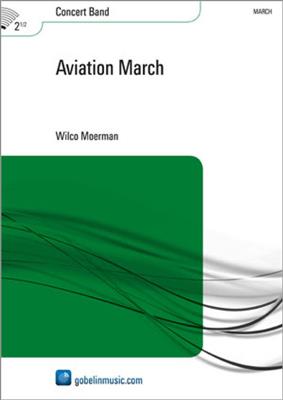 £89.99
£89.99Aviation march - Wilco Moerman
Mankind has always had the desire to fly. Initially we tried to imitate birds to fly, which eventually resulted in the invention of balloons, airships, gliders and powered aircrafts. The first airship in the world that could fly in a controlled way, was invented by Henri Giffard. This airship flew on September 25, 1852 from Paris to Trappes. The ship was 43 meters long and flew 8 km per hour over a distance of 27 km. Other key names for the many changes and developments of the aviation industry, are the Wright brothers on December 17, 1903 with their first motorized flight, of 12 seconds over a distance of 37 meters with a homemade motorized aircraft called the Flyer. Later the same day this record was improved by a flight of 60 seconds over a distance of 260 meters. The first flight across the Channel between England and France was made by Louis Blriot on July 25, 1909. The distance of about 45 km was covered in a time of 37 minutes. In 1910, the first woman, a French pilot (Raymonde de LaRouche), made her first solo flight. She was also the first woman who got a license to fly.This march is a tribute to the many years of development within the aviation industry and gives voice of the pride, the romance, the heroism and the status of this way of transportation.
Estimated dispatch 7-14 working days
-
 £109.50
£109.50Three London Sketches - David Campo
London is one of my favorite cities in the world, and in 2016 I was invited there to serve as an adjudicator for the London New Year's Day Parade and Gala Concerts. While I was there, I was fortunate to meet and spend time with The Lord Mayor of Westminster Councillor Steve Summers. While his title sounds formidable and intimidating, I found Steve to one of the nicest, most easygoing people I've ever met. And boy, does he love London! He was fond of saying that he had "the best job in the greatest city in the world." He spoke passionately about London and his favorite places in the city, and his enthusiasm was contagious. Some of his favorite places became some of my favorite places, and the inspiration for this piece. I hope that this work not only conveys the beauty and history of these iconic places, but Steve's deep and abiding love for them as well. I. Tower Bridge - The Tower Bridge was built over 120 years ago to ease road traffic while maintaining river access to the busy Pool of London docks. Its giant moveable roadways lift up for passing ships, making it a true engineering marvel. It is also one of the most iconic sites in London, and was used to display the Olympic Rings during the 2012 Olympics. II. St. Paul's (The Whispering Gallery) - The history of St. Paul's Cathedral goes back well over a thousand years, but construction on the current St. Paul's began in 1669 after a fire destroyed the earlier structure. The dome of St. Paul's Cathedral is a whispering gallery; you can whisper against the wall on the inside of the dome and it can be clearly heard on the other side of the dome over 100 ft. away. Imagine the secrets that have passed there... III. Trafalgar Square - The name commemorates the 1805 naval Battle of Trafalgar and is marked by Nelson's Column, a monument to Admiral Horatio Nelson, the hero of the Battle of Trafalgar. It is the heart of London; full of life and constant energy and home to iconic buildings including the National Gallery, St. Martin-in-the-Fields, Canada House and South Africa House. Londoners say that all roads in London lead to Trafalgar Square.
Estimated dispatch 7-14 working days
-
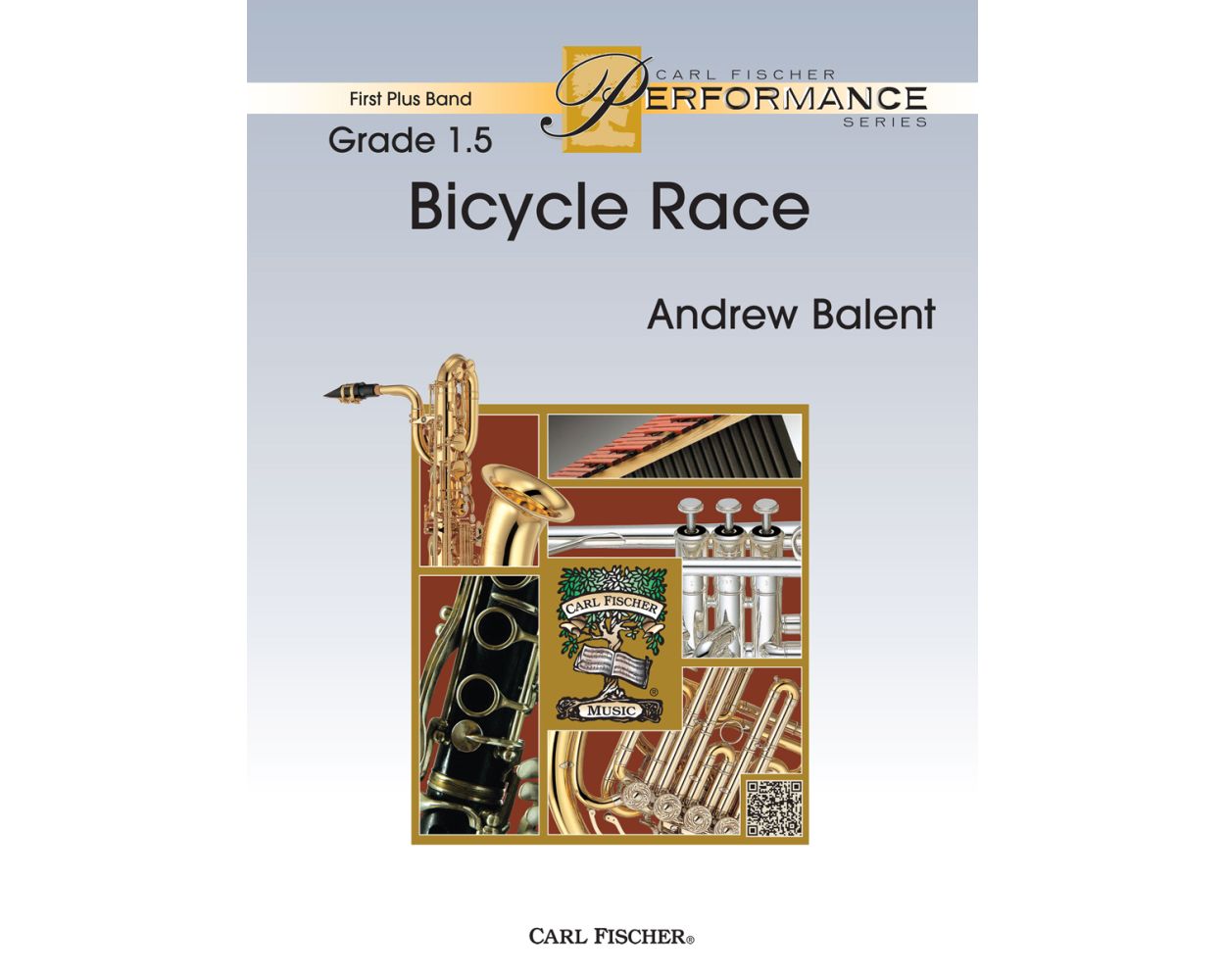 £46.00
£46.00Bicycle Race
Take your band on a musical bicycle ride with this piece for developing musicians. It has a catchy tune that students will want to play over and over again. It can be used as a great teaching piece for working on steady, even eighth note patterns and uniformity of articulation style. The bicycle bell and horn will add to the fun of this piece!
Estimated dispatch 12-14 working days
-
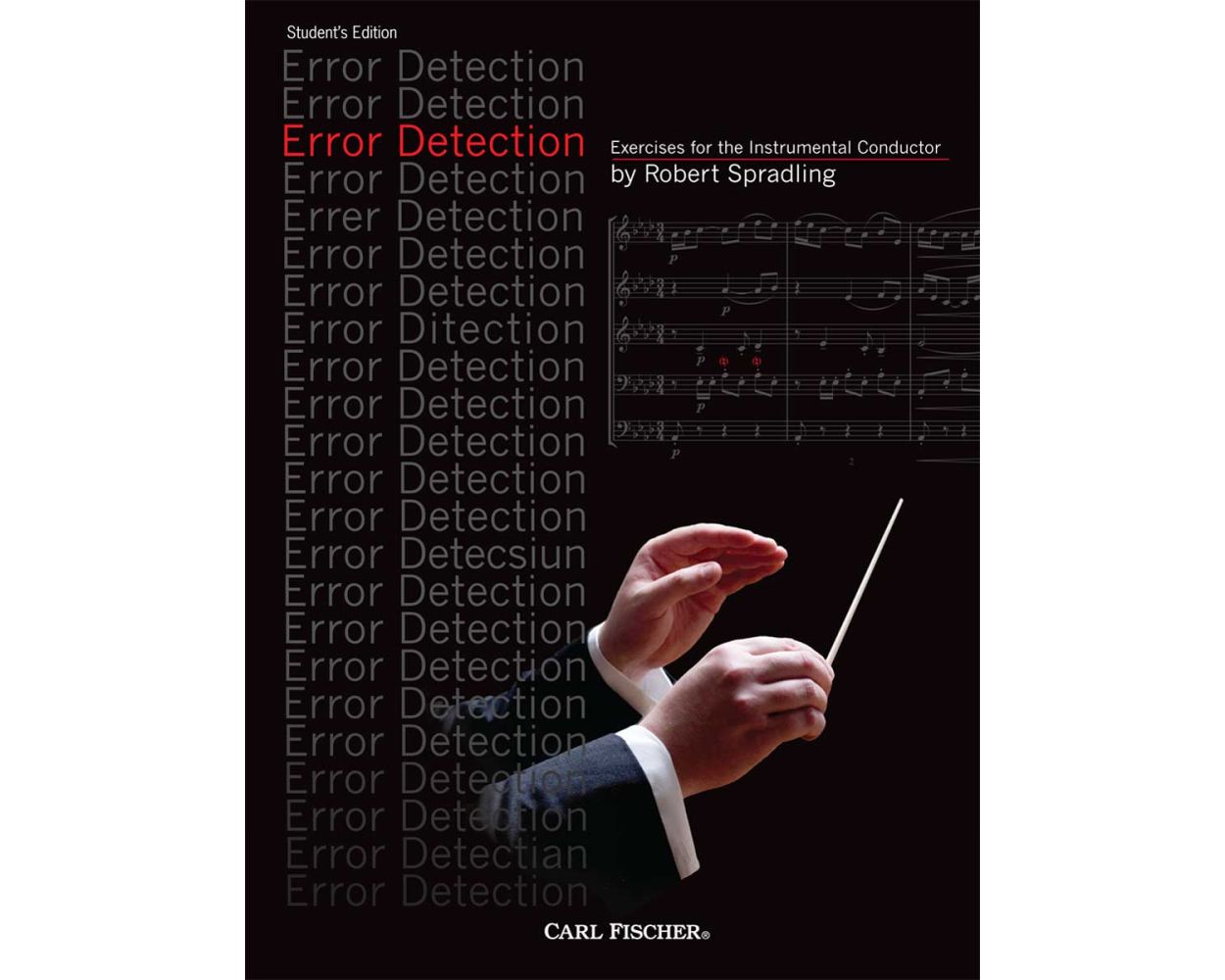 £32.00
£32.00Error Detection - Student's Edition - Robert Spradling
The Error Detection: Exercises for the Instrumental Conductor texts are designed to improve the critical listening skills of the conducting student through real music excerpts that contain planted errors in the parts for the conductor to find. Both books contain 54 excerpts from standard band literature from grades 2 to grade 6 so students gain knowledge of real music they can use later, not just non-musical etudes. The teacher's edition contains over 350 pages of materials with analysis sheets and answer keys to help the conducting teacher to easily evaluate the student's progress. The teacher's edition also comes with a CD-ROM containing all of the instrumental parts for all of the musical excerpts as PDF files, so the teacher can just print the amount of parts needed for each example, and the examples are arranged to sound satisfying with as little as five players. The Error Detection program has been tested for over 3 years at major university programs like the University of Minnesota, Illinois State University, and the College-Conservatory of Music at the University of Cincinnati.
Estimated dispatch 12-14 working days
-
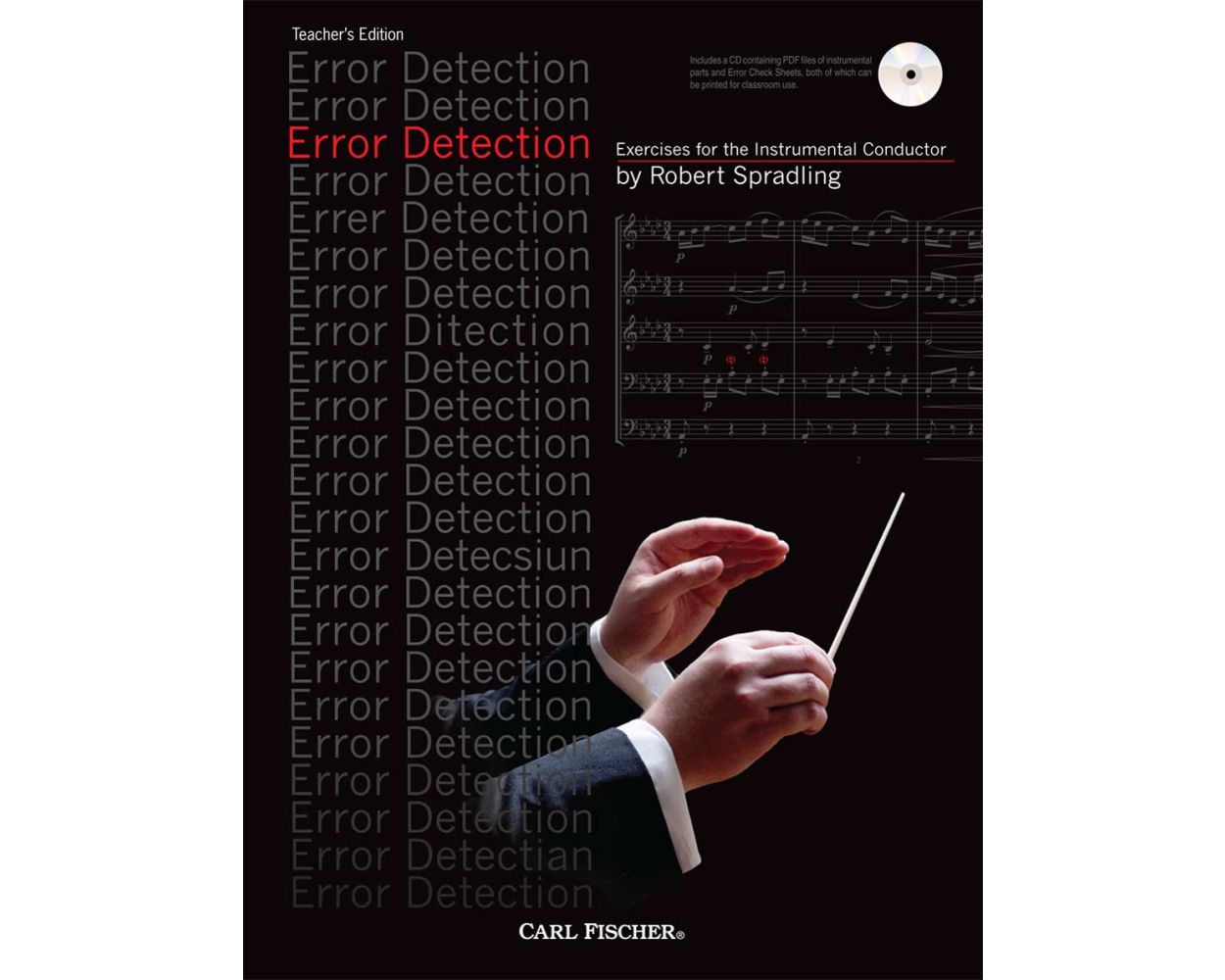 £148.00
£148.00Error Detection - Teacher's Edition - Robert Spradling
The Error Detection: Exercises for the Instrumental Conductor texts are designed to improve the critical listening skills of the conducting student through real music excerpts that contain planted errors in the parts for the conductor to find. Both books contain 54 excerpts from standard band literature from grades 2 to grade 6 so students gain knowledge of real music they can use later, not just non-musical etudes. The teacher's edition contains over 350 pages of materials with analysis sheets and answer keys to help the conducting teacher to easily evaluate the student's progress. The teacher's edition also comes with a CD-ROM containing all of the instrumental parts for all of the musical excerpts as PDF files, so the teacher can just print the amount of parts needed for each example, and the examples are arranged to sound satisfying with as little as five players. The Error Detection program has been tested for over 3 years at major university programs like the University of Minnesota, Illinois State University, and the College-Conservatory of Music at the University of Cincinnati.
Estimated dispatch 12-14 working days
-
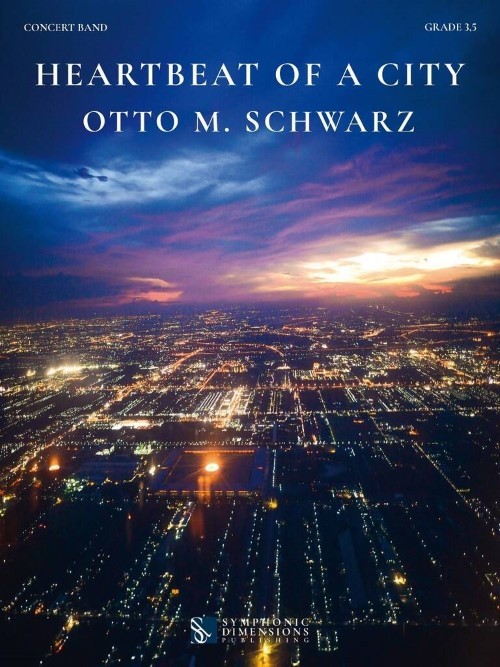 £139.99
£139.99Heartbeat of a City (Concert Band - Score and Parts) - Schwarz, Otto M.
A city is founded, it has a heart that beats. But visible achievements such as buildings and infrastructure merely bear witness to what its true heart is made of, the people who have lived, and still live, in the city. The pulse of the city, brought to life by its heartbeat, changes over time. Who hasn't seen those time-lapse images showing twinkling lines of car lights as people make their way to work, while others stand at traffic lights, only moving as if at the push of a button? These are like life flowing in the veins, driven by a strong heart. Leonardo da Vinci had already imagined the rivers as the blood vessels of the Earth. In any city, though, it's not the rivers but the movement and activities of the people who live there. The heart doesn't always beat steadily, however, but its rhythm can be influenced by joy, fear, and many other things. Every city has its own pulse. This is also true of the university city of Marburg, where people from over 100 nations now live together in a cosmopolitan and tolerant community. This work describes the city from its founding in 1222, and the charity of Saint Elizabeth, all the way to the present day.Duration: 9.15
Estimated dispatch 7-14 working days
